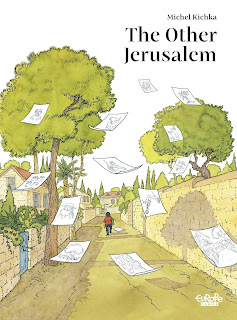The seed of every revolution germinates on the ground of exploitation. It grows and spreads itself initially by synthesising the lifeblood of its foot soldiers—idealists and martyrs. But eventually it has to turn its roots deep into the same ground, resulting in another turn of the same vicious cycle of corruption and power dominance. These were my thoughts after reading A Star Called Henry, a historical fiction novel written by the Irish novelist Roddy Doyle.
A Star Called Henry is based on the Irish War of Independence. It begins with the birth of Henry Smart, a fictional hero of the revolution, as the son of a one-legged bouncer who is also an assassin. After surviving a poor and depraved childhood in which he witnesses a sibling's death, his mother's descent into madness, and his father's abscondence, he ends up participating in the Easter Revolution when he is fourteen. The novel follows him for six more years of functioning as a legendary foot soldier for the revolution, travelling in the interiors of Ireland, training new recruits, and participating in several murders of policemen and spies, armed with his father's wooden leg.
While we witness the ascent and eventual descent of Henry Smart, we get to observe closely several historical events and personalities associated with the Irish War of Independence. The novel takes a narrative path similar to Forrest Gump, where history is revisited through the eyes of a fictional protagonist. Like Forrest Gump, it also makes its protagonist emotionally detached from the events in which he actively participates. Another attempt that I can recount that tries a similar approach is the Malayalam movie Dany, whose protagonist, a saxophone player, played by a brilliant Mammootty, stumbles through his life when important political events rewrite history around him.
Though the book has its plot rooted in real events and personalities, the narrative takes a route that's out of the ordinary. Roddy Doyle takes the inherent violence and sex in the plot and then amplifies it to a level that makes it seem contrived. Though the book has a Dickensian beginning, with adolescent Henry and his siblings trying to survive a ruthless Dublin, we can observe a thread of magical realism in the portrayal of his one-legged father, who has an affinity for the water systems of the city and a peculiar weapon of choice—his wooden leg.
But while portraying Henry's participation in the Easter Revolution, the author uses a realist tone when describing men in war and the associated violence. Then strikes a jolting shift of distorted reality, which pulls the rug under the feet of the reader, and from then on, the narrative races along with the same madcap energy. Though the book uses magical realism, it doesn't bother to attain the sophistication of Rushdie or the balance of Marquez. Instead, it seems more related to a Tarantino movie that applies an elevated degree of mayhem and anarchy to put its point forward, and its protagonist resembles a classic dilemma-inflicted superhero.
An important symbol that characterises Henry Smart is the wooden leg that he inherited from his father, who is also named Henry Smart. He also inherited the deep knowledge of the system of water bodies—sewages, drains, and rivers—under Dublin, which he has used to his advantage several times. I feel that using the same name for father and son, indicating continuity in their life stories, is a crudely simple but effective technique to establish it strongly from the outset. While the father, being a hired killer, murders indiscriminately, the son believes that by working with the revolutionaries, he is doing it for a cause. When that belief shatters, it results in him abandoning his inheritance.
A Star Called Henry is a historical novel that uses its historic elements to explore the fate of revolutions. The novel amplifies its components of violence and sex to portray a distorted and contrived state of reality. Headlined by a complex protagonist who seems emotionally detached from the proceedings for most of the time and employing a swift narrative, it is a fulfilling reading experience.




%20(19).jpeg)
%20(20).jpeg)
%20(17).jpeg)
%20(18).jpeg)

%20(13).jpeg)

%20(12).jpeg)
%20(1).png)